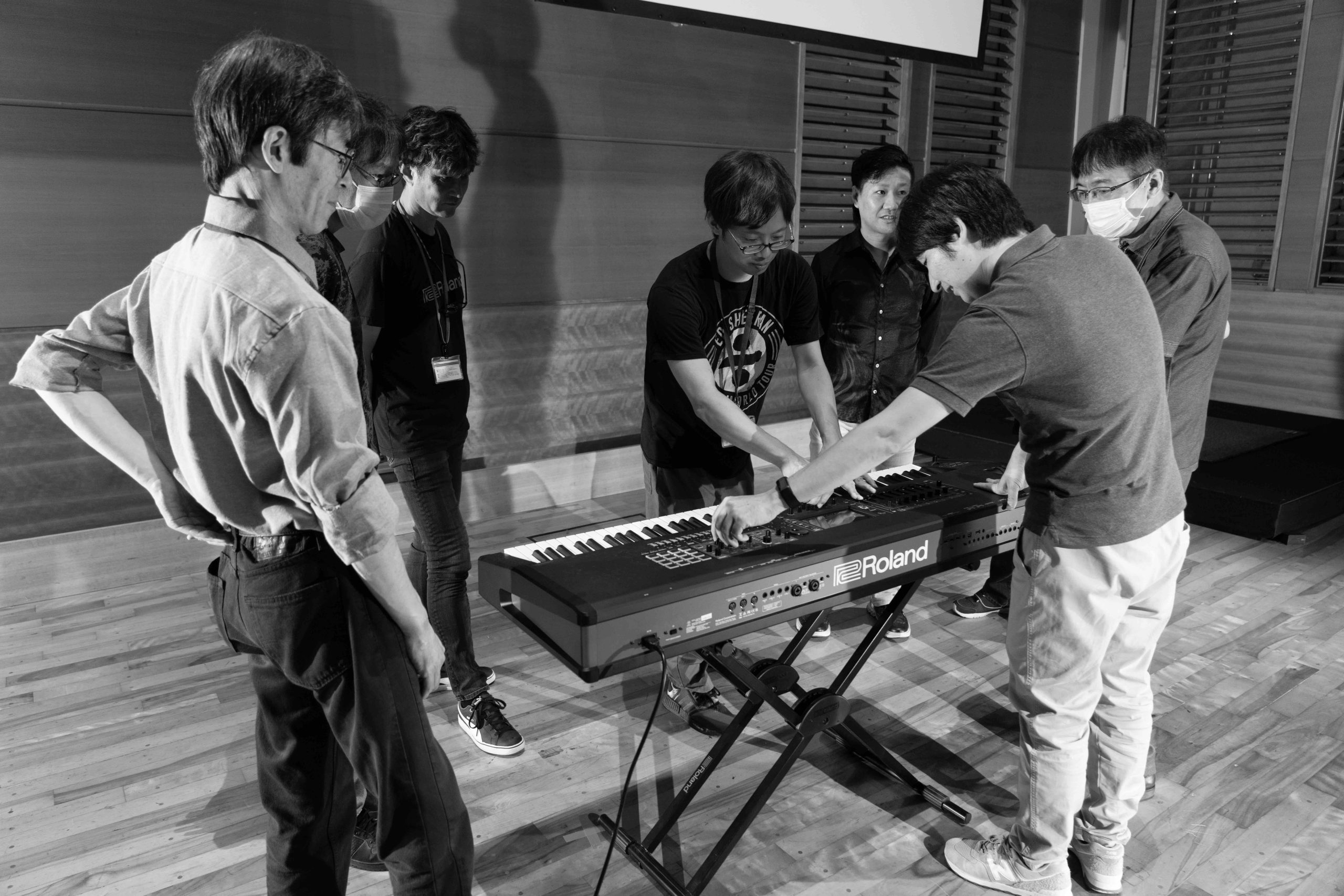FANTOM is more than a synthesizer, though its synthesis power is astonishing. Combining ZEN-Core, PCM, multisampling, SuperNATURAL, and V-Piano technologies, it’s a sound design wonderland. Anything but static, FANTOM is also a continually evolving platform for emerging synth engines like n/zyme. Its dynamic workflow removes blocks between artists and the sounds in their heads. Behind the scenes is a group of dedicated engineers working to expand the scope of this multi-faceted instrument. Takeo Shirato and his team help illuminate the groundbreaking creative hub and its perpetual growth.
Bringing FANTOM Back
Where does the FANTOM story begin?
Roland has always been proactive in offering the best synthesizers to meet the needs of artists. The FANTOM-G, released in 2008, was also a flagship versatile synthesizer that met the multiple needs of users in the studio and on stage. The trend in music production then moved into the era of the DAW. We felt the role of synthesizers would shift from workstation-style to performance-specific. Many composers and music directors had been calling for a versatile, workstation-style synth like the FANTOM-G for a long time. Even with DAWs at the height of their popularity, there was an ongoing demand for these versatile synthesizers.
"Even with DAWs at the height of their popularity, there was an ongoing demand for these versatile synthesizers."
How did the team come back to the FANTOM name for the project?
At the beginning of the development in 2017, the product was not named FANTOM. In early 2018, a marketing member suggested that if Roland was going to redefine this concept, FANTOM was the perfect choice. And in 2019, Roland released FANTOM in full force as its flagship.
Face-to-Face Input
Was user input a part of the development process?
We met face-to-face with our customers worldwide as much as possible. The goal was to investigate and analyze their reasons for choosing their synthesizers. We learned how they use them in live performances and studios and the problems they encounter. Then, we started development to redefine the optimal synthesizer by studying pain points and improving each one.
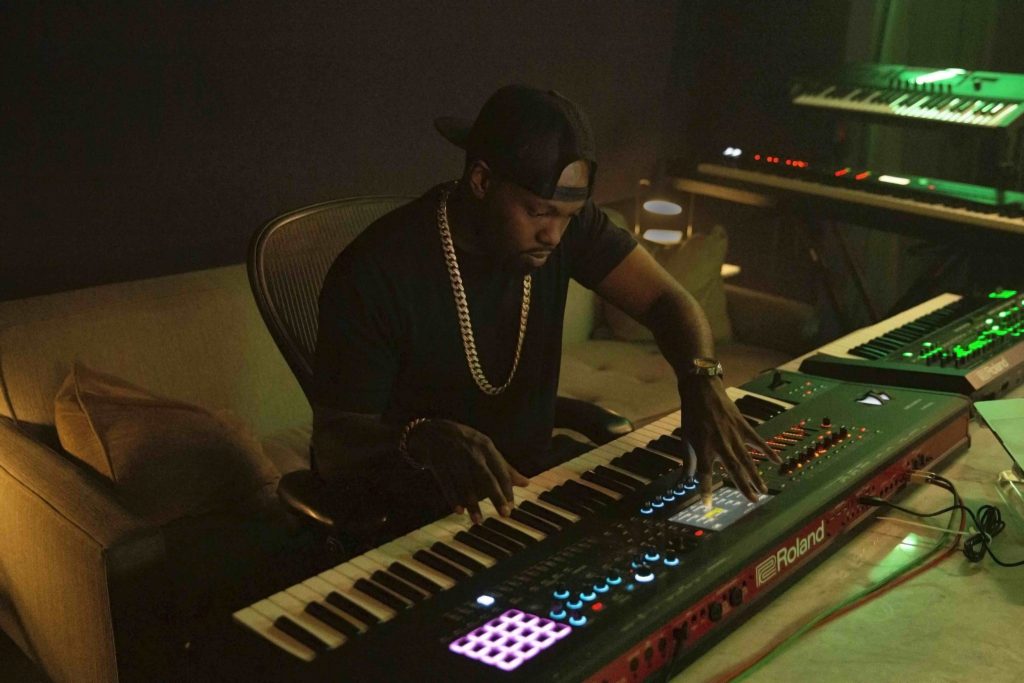
What common issues from workstation synthesizer users did you discover during these conversations?
The good points were sound, easy large touch panel operation, and the keyboard. The bad points included difficulty learning the structure and the hierarchical process.
We also learned that voice selection and synthesis during performance were challenging for live users. Users told us switching between sounds would be smoother without sound cutoffs. Many wanted to use MainStage and VSTs, but it was challenging. Some workstation synthesizers take too long to start up. Regarding studio use, we learned that integrating with DAWs was difficult. Plus, operability made many players lose motivation before creating.
"FANTOM utilizes the ZEN-Core Synthesis System and is a unique creative hub. A central theme is seamlessly transitioning from the main unit to the DAW."
What integration possibilities does FANTOM offer DAW users?
FANTOM utilizes the ZEN-Core Synthesis System and is a unique creative hub. Since using a DAW for production is popular, a central theme is seamlessly transitioning from the main unit to the DAW. 16CH USB audio allows all tracks to get recorded simultaneously to individual tracks on the DAW. The low-latency USB audio design makes playing soft synths a breeze. Although this part is fundamental, it is essential from the customer’s point of view. The quality will determine the usability of the system.
We designed the advanced control surface with support for Apple’s Smart Control. This allows the display and manipulation of Logic and MainStage information on the central unit’s screen. Our 2021 update supports Ableton integration.
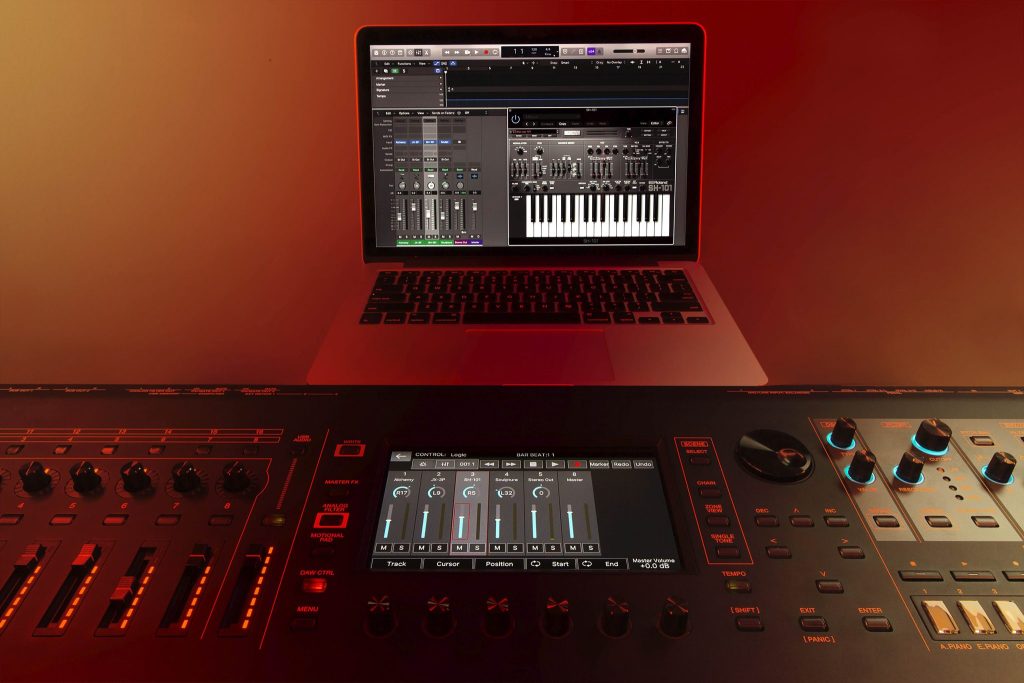
Look and Feel
Tell us about the FANTOM keyboard.
The 88-key FANTOM features the same hammer-action piano touch keyboard as the popular RD-2000. The 76-key and 61-key keyboards come equipped with a newly developed synthesizer keyboard for the FANTOM. The new keyboard is quieter when the keys get released, with a pleasant clicking sensation. It’s very responsive to dynamics, and the base is long, so it is easy to play deep into the keyboard with good finger response. This makes playing piano sounds, synth instruments, and organs easy. It also supports flowing glissandos and ornamental notes.
"The engineers wanted the flagship synth to be absolutely cool, a joy to use, and a pleasure to own."
What was the design process like for the look of FANTOM?
The engineers wanted the flagship synth to be absolutely cool, a joy to use, and a pleasure to own. For this reason, we visited Axel Hartmann, a world-renowned synth designer, in Germany to ask him to design the FANTOM. We incorporated his input into the UI and design. I always feel discomfort when I see prototype sketches. However, this time there was no discomfort. The design had such a high degree of perfection.
The panels are aluminum and completed with a matte finish by spraying glass powder in the blasting process. The finish is very high quality and feels good to the touch. However, it was also the first time we used it, so we had some difficulty. The red rear panel came about from discussions in Malaysia at the production plant. From procurement of individual parts to assembly as a product, we went through improvements to achieve its appearance.
"FANTOM's no-mode structure concept reduces users' time learning and increases their creative time."
Mode-Free Zone
How did the engineering team create a complex architecture featuring an easy-to-use UI with no modes?
When researching what caused users such complexity and difficulty, we found one consistent cause: modes. Until recently, many synths had patch mode, live mode, studio mode, and performance mode. Users had to understand the mode concept before using them.
FANTOM’s no-mode structure concept reduces users’ time learning and increases their creative time. The UI design concept improves freedom while allowing the user to control the current state and see what is coming next. FANTOM adopted a completely new system and GUI framework to achieve smooth operation and a high degree of independence.
Were there any challenges?
At the beginning of development, we were in a state of continuous exploration, which caused difficulty. In addition, the UI design with a large touch LCD required trial and error in pursuit of intuitive ease of use and operability.
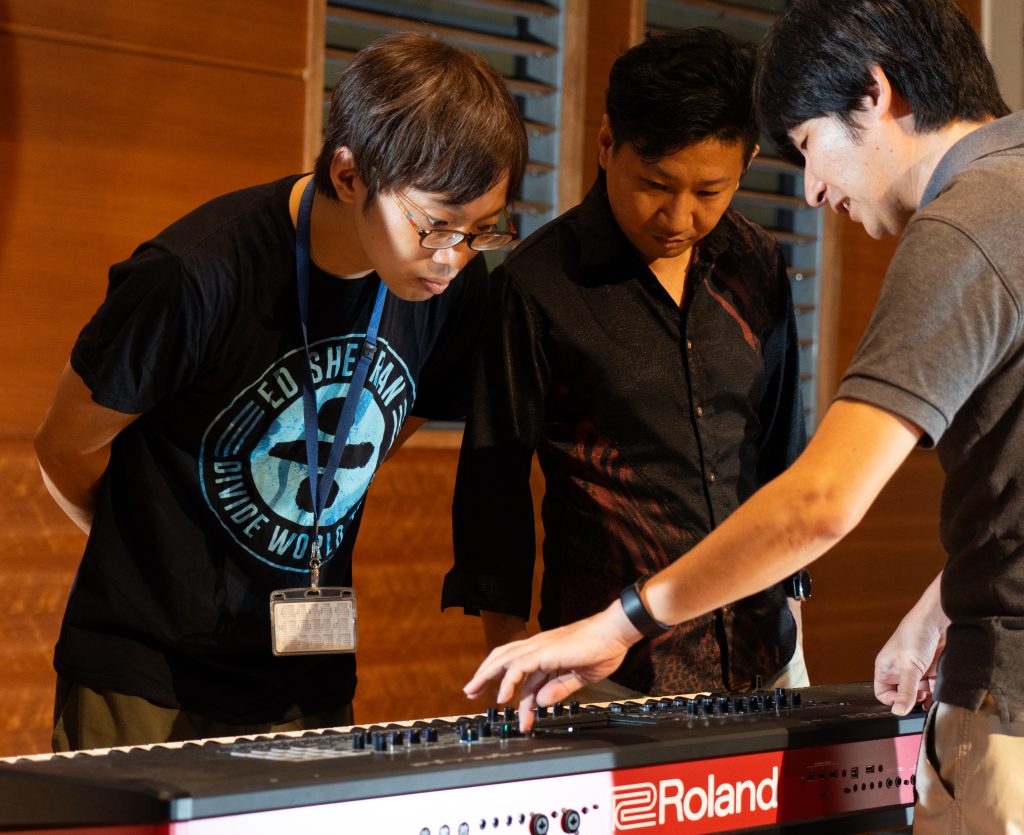
Chips Ahoy
What are the benefits of the four BMC and three additional chips in FANTOM?
As our flagship synthesizer, FANTOM comes with several of our custom BMC chips—the most in any Roland product. We implemented three extra chips (CPU, FPGA, etc.) to maximize the power of the extra custom chips and further enhance expandability.
We have taken great pains to shorten boot time. FANTOM has a new system that can load 2 GB of waveforms and be up and running in less than 30 seconds. This makes full use of our custom chips and FPGA. Hardware needs to be able to work immediately when an idea comes to mind. If an artist’s inspiration gets lost in turning on the power and loading, the system is not user-friendly.
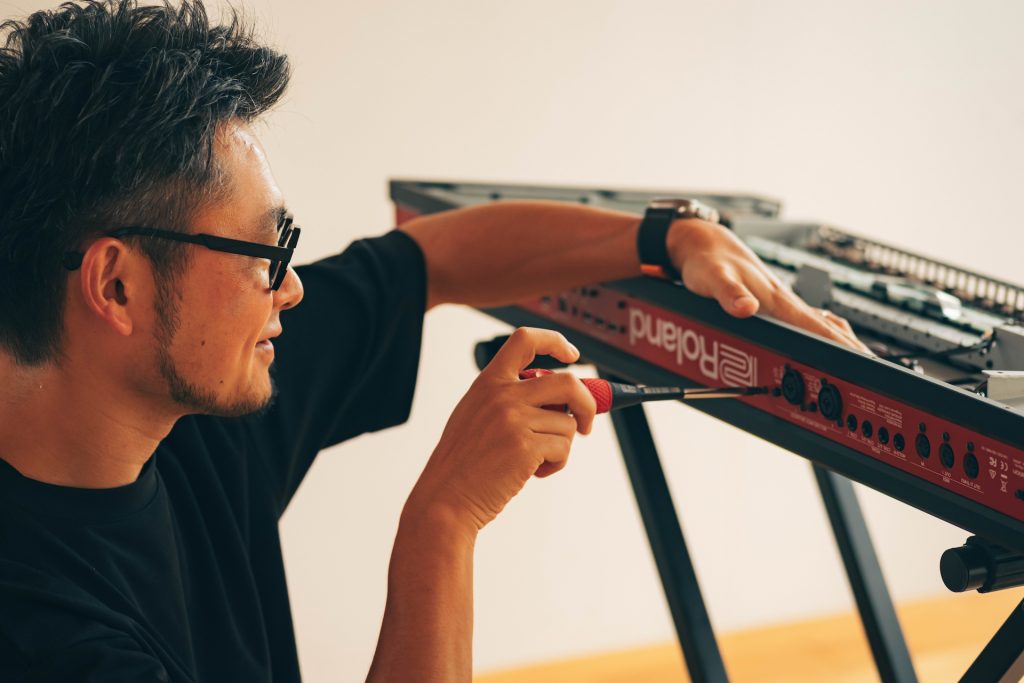
Performance Breakthroughs
How did your expertise in FPGA play into the development of FANTOM?
I joined Roland in 2017. Prior to that, I was a hardware and FPGA engineer for inkjet printers and digital cameras. FANTOM was my first product after joining Roland. FANTOM may appear complex because it incorporates several custom chips and additional chips. However, the architecture of synthesizers and inkjet printers are very similar, so it took me only a short time to get to grips with the whole system. Using skills from printer development, I found improvement points to maximize performance.
Reducing startup time is a common challenge for both printers and instruments. Printers should print as soon as they get turned on, and electronic instruments should also be ready to start playing immediately. Therefore, I could minimize the time to load a large amount of waveform data at startup and maximize the performance of the custom chip. I did so by utilizing FPGAs, which I often employed in my previous work.
"With each version release, we noticed increased positive feedback from our customers. Our product has steadily evolved along with this input."
Were there any breakthrough moments demonstrating the process was moving in the right direction?
FANTOM has had regular system program upgrades since its launch in September 2019. We’ve added features like Supernatural Acoustic Strings Brass, Roland Cloud support, multi-sample, Ableton Live support, and n/zyme. With each version release, we noticed increased positive feedback from our customers. Our product has steadily evolved along with this input. This gives us confidence that our overall development process is moving in the right direction.
Achieving Balance
The FANTOM-0 series brought the name to a lightweight format. What was the experience creating these instruments?
The FANTOM-0 series inherited the ZEN-Core-based sound technology and functions from FANTOM development. We focused on achieving the best balance, including the price and weight of the unit. While highly functional, these products are half the price of the FANTOM without compromising quality. For the 61- and 76-key versions, we developed a new keyboard with a high-quality touch but greater portability.
Are there any significant differences in the FANTOM-0 construction?
Some mechanical parts, such as the custom sound chips and wheels, are common to the FANTOM series. Still, we designed many features specifically for the FANTOM-0 to pursue weight reduction. We had been considering the series even before completing the development of FANTOM. But, we managed to make it a reality despite external factors such as the rising costs of semiconductors and transportation.
"n/zyme is a brand-new synth engine that combines the maximum performance from multiple custom chips with a graphical user interface."
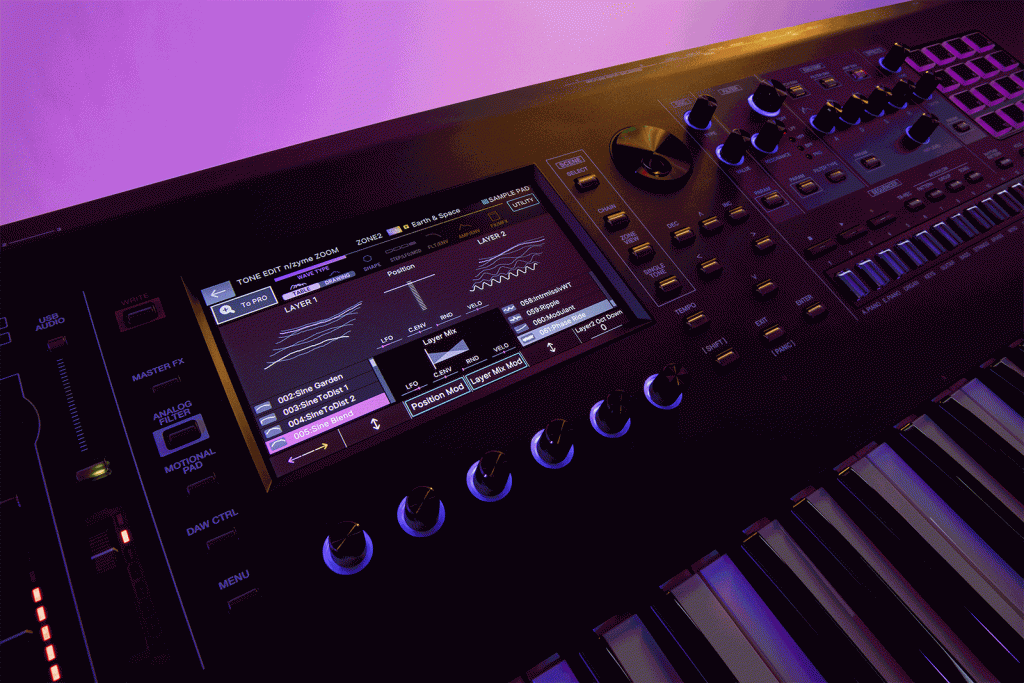
New Possibilities
n/zyme combines wavetable oscillator layers, phase and shape modulation, resonant filters, and two-step LFOs. How has it expanded the power of FANTOM?
n/zyme is a brand-new synth engine that combines the maximum performance from multiple custom chips with a graphical user interface. After reviews and improvements by internal experts and external artists, we released the product in January 2022. With n/zyme, the range of changes in phase and shape of the sound can be charted and automatically changed over time. The speed and depth can also be varied, making it possible to effectively change the sound in the latter part of a phrase.
What are some of the integration possibilities between FANTOM and Roland Cloud?
FANTOM supports Roland Cloud and its ZEN-Core Synthesis System formats like Wave Expansion and Model Expansion. In the future, we plan to integrate Roland Cloud and FANTOM further.

FANTOM Future
What are you most proud of about FANTOM as a synth?
We are proud that the synthesizer bears the FANTOM name and is constantly evolving to meet the needs of this era’s customers.
What can FANTOM users look forward to soon?
The FANTOM Development Team has been working hard to unveil a massive breakthrough: bringing Analog Circuit Behavior (ACB) to FANTOM. We are excited to share this, plus other new expansions and features, with all FANTOM users very soon.
The evolution of this creative hub continues. Look out for an exciting FANTOM announcement this November.
